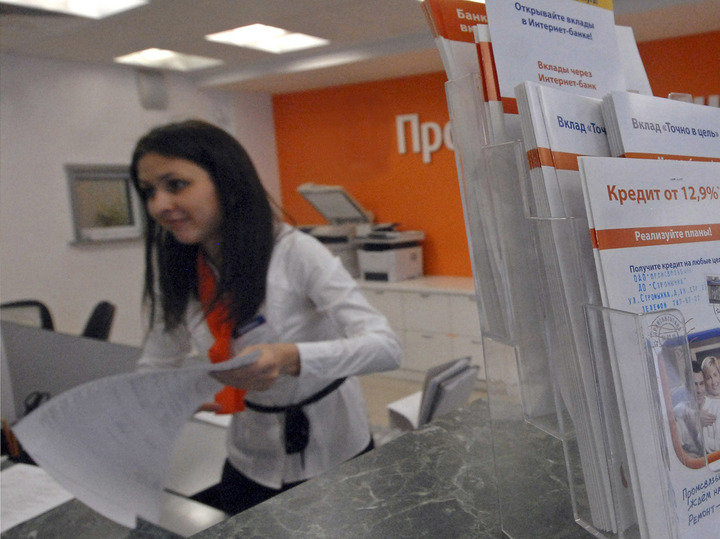Experts named the risks of the current situation in the housing lending market
The growth of overdue debt on mortgage loans as of May 1 amounted to 13.45% in annual terms. This is evidenced by data from the Bank of Russia. Such a high increase in overdue debt was the highest since January 2019, that is, in more than five years. What caused it, will it lead to a crisis of non-payments or the formation of a “bubble” in the housing lending market?

Delinquency on ruble mortgage loans in April increased by 13.45% over the year, which was a record for the last five years. At the same time, the annual growth rate of the loan portfolio amounted to 26.14% and was almost twice as high as the increase in overdue debt, according to data from the Central Bank of the Russian Federation.
According to Freedom Finance Global leading analyst Natalya Milchakova, the main reason for the increase in mortgage arrears is the rapid growth in the issuance of housing loans in previous periods of time. The more mortgages are issued, the greater the likelihood of arrears. But there is another opinion. “The increase in delinquency arose due to a decrease in the availability of mortgage products,” says Alexey Novikov, director of the mortgage lending department at Est-a-Tet. — In particular, due to the reduction of limits, an increase in the down payment on state programs, which resulted in the need for clients to take out additional expensive loans: consumer loans, microloans. Also, the growth of delinquencies was affected by a significant increase in rates of standard mortgage products, which directly depend on the level of the key rate.”
Indeed, until recently, buyers could take out loans on more favorable terms. For example, previously a client could get a mortgage with state support for up to 12 million rubles with a down payment of 15% and an interest rate of 8%. Now the same client has to take out a market loan of 12 million rubles with the same contribution of 15%, but with a rate of 17%. As a result, monthly payments under the standard program are growing, and those who want to take advantage of state programs are trying to get the first payment through consumer lending, which entails an increased debt burden, the expert explained.
However, although the trend is negative, a full-scale crisis in the Russian mortgage market is still far away. “In this case, we can talk about a certain mathematical effect,” says Alexey Volkov, marketing director of the National Bureau of Credit Histories. — The mortgage portfolio of banks grew at a fairly high rate last year, so the volume of overdue loans also increased. The main thing is that the growth rate of the mortgage loan portfolio significantly exceeds the dynamics of overdue debt. Therefore, it is premature to talk about a serious danger for the market.”

As the head of the Analytical Center “Real Estate Market Indicators” Oleg Repchenko recalled, in order to prevent a negative scenario, the Central Bank of the Russian Federation several times increased the premiums on risk coefficients for mortgage loans with a low down payment and for heavily over-leveraged borrowers. Moreover, the last time the regulator did this was quite recently — in March. In addition, in September last year, the government increased the down payment on preferential programs from 15 to 20%, and in December — to 30% on preferential mortgages at 8%, including in order not to issue mortgages to risky borrowers. “The authorities are taking all necessary measures to avoid crisis scenarios,” said Maria Perevoshchikova, a member of the expert group of the Public Council under the Ministry of Construction.
The most famous credit “bubble” in the world, after the Great Depression of the first half of the 20th century, took place in 2007-2008 in the USA, and it was precisely the mortgage “bubble”. In the fall of 2008, it provoked a global economic crisis. But, as Milchakova noted, the peculiarity of the American “bubble” was that, firstly, it arose at very low interest rates of the US Federal Reserve, and secondly, at very low housing prices, which motivated even unreliable borrowers to take out mortgage loans inexpensively . And when the Fed began to fight inflation by raising interest rates, the mortgage bubble deflated sharply. In Russia, when interest rates were low and housing was not as expensive as it is today, there were some signs of a credit bubble forming, but only until the Bank of Russia began taking measures to allow lenders to weed out the least reliable borrowers . Currently in Russia, such a scenario is unlikely, especially since preferential mortgages will be canceled from July 1. However, since other preferential mortgage programs remain, albeit under stricter conditions for borrowers, one should not rush to optimistic conclusions that there can never be a mortgage “bubble” in Russia, the analyst warned.


